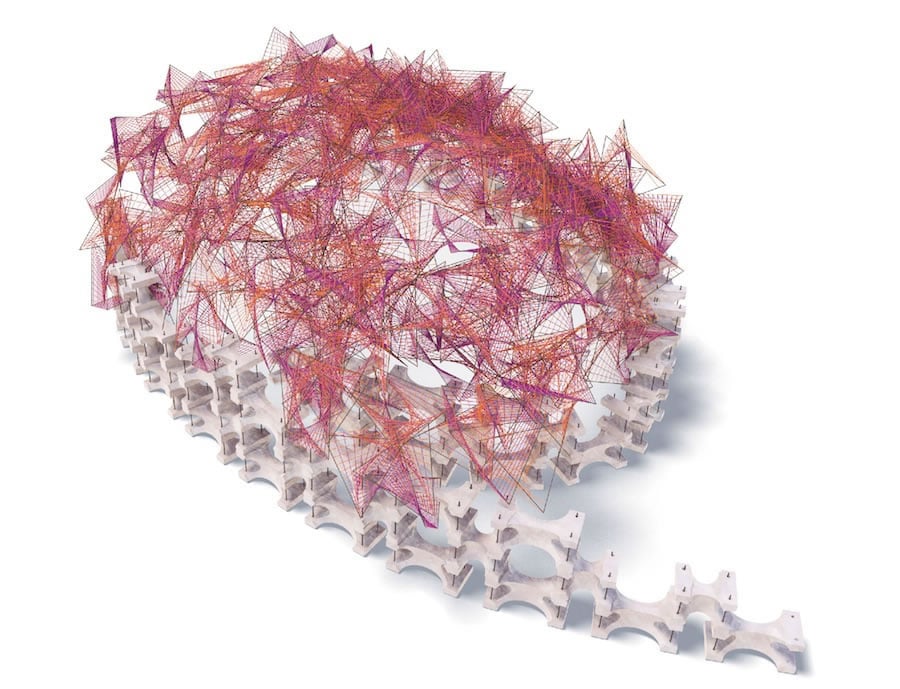For most of Governors Island’s modern existence, the historic New York isle has predominately served as a post for the United States Army and later, Coast Guard. In more recent years, however, the federal government has bequeathed the property onto nearer holders, formulating a joint ownership between the city and state of New York. The change his invited increased public occupancy, transforming the island into a site for community-based art functions such as the City of Dreams Pavilion Competition, which, in its fifth year has recently revealed its 2015 winners: BanG Studio’s Billion Oyster Pavilion and Izaskun Chinchilla’s Organic Growth. We caught up with the designers behind the two to chat sustainability in public art.
“We call it ‘ping-pong,’” explains Babak Bryan of the creative exercise he shares with his BanG Studio partner Henry Grosman, wherein ideas are expressed in a brisk, to-and-fro exchange between parties, constricting time to retract or overthink. The ritual is intended to pull ideas from any chanced area of the mind to the table of discussion, worrying not about relevance to the project or to architecture in general. The natural outcome is that the “good ideas build resonance and the weaker ones fall through the cracks.” Bryan, one half of BanG Studio architectural duo, enjoys culling inspiration from various, unpredictable sources and, observing BanG’s “Billion Oyster Pavilion,” defying convention and espousing an otherworldly vibrancy, this is apparent.
After sketching out an agreed-upon concept, the team brainstormed selecting building materials that would limit the pavilion’s environmental impact, eventually learning that the New York Harbor School was also located on Governors Island. Leveraging the coincidence, the two got in touch with the school and consulted them in regards to what materials they would find useful and could acquire after the run of the installation has lapsed. The conversation shaped BanG’s approach, and the designers have kept in contact with the Harbor School throughout the entire process to confirm that each building block be reusable to their curriculum, leaving no piece discarded or suffering the fate of waste.

Bicycle wheels, umbrellas, and stools comprise the “Organic Growth” pavilion by Izaskun Chinchilla.
Whereas BanG Studio aims to prevent waste, Izaskun Chinchilla ventures to intercept it. Bicycle wheels, umbrellas, and stools all damaged or otherwise unfit to serve their purpose, rerouted from their destination to the dump, constitute the Madrid-based architect’s “Organic Growth” pavilion. And unlikely as it might seem, the assembly of these discarded remnants results in an undeniable object of beauty and enchantment effectively honoring and celebrating the delicate gifts of nature— specifically, Hydrangea flowers. Explains Chinchilla of the alluring genus, “The Hydrangea flower is a resilient structure: a number of the stems or smaller flowers may break but the dome keeps resistant,” which is reflected in the pavilion’s structural density, adding that the Hydrangea’s behavior is characterized by what’s called “capacity design.”
“The joints between different elements are stronger than the elements themselves creating a resisting shape out of slender components,” allowing the canopies to lightly interact with the wind’s shifts while remaining grounded by reused bicycle wheels and tripods. The wheels are also intended to inspire the sustainability of human health. “In our projects, we work to promote cycling culture in many ways,” Chinchilla says of his team.

